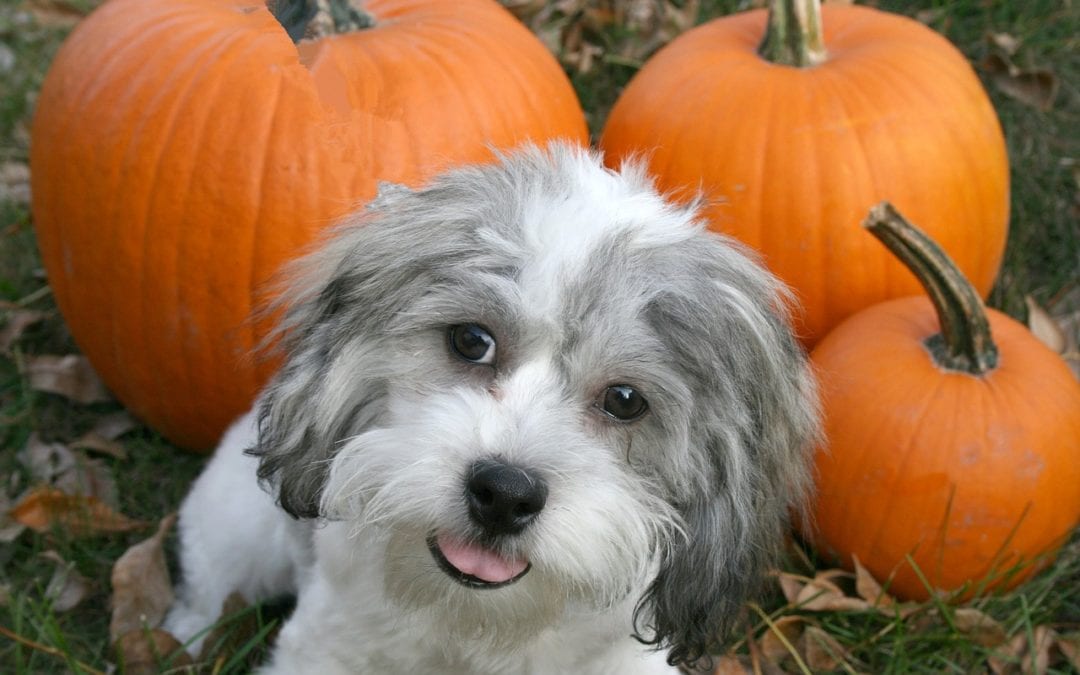Halloween can be the scariest night of the year, but it should not be for your pet. Please read the following tips on how to keep your pets happy and healthy this Halloween.
Decoration safety tips
Carved jack-o-lanterns certainly are neat, but pets can easily knock over a lit pumpkin and start a house fire. Cats are especially at risk of getting burned or singed by a candle flame. Please never leave a lit candle in the home with your pets unattended. Popular Halloween plants such as pumpkins and decorative corn are considered nontoxic, but can produce stomach discomfort in pets who nibble on them or even GI obstruction in pets that ingest large quantities. The recently popular spider webbing can be dangerous if ingested by cats and dogs. If your pets show interest in eating/chewing on this material, it should be removed from their access. Electrical cords also present a risks to young animals. Please keep them out of reach. If chewed, your pet could cut themselves on shards of glass or plastic, or even possibly incur a life-threatening electrical shock.
Costume safety tips
While some pets find wearing costumes great attention and fun, others it may cause significant amounts of stress. It is recommended to not put costumes on your pets unless they appear to like it. If you do dress up your pet for Halloween, make sure the costume does inhibit movement, sight, the ability to breathe, bark or meow. Check the costume carefully for small or easily chewed-off pieces that could cause a choking hazard and never leave your pet alone wearing a costume. It is very common for pet clothes and costumes to get caught on items in the home and cause life threatening injuries.
Hide the Treats
The candy bowl is for trick-or-treaters, not your cat or dog. Several popular Halloween treats are toxic to pets. Chocolate in all forms—especially dark or baking chocolate—can be dangerous for cats and dogs. Sugar-free candies containing the artificial sweetener xylitol can cause serious problems in pets and must always been hidden from pets. Raisins are also toxic to cats and dogs. If you suspect your pet has ingested something toxic, please call your veterinarian immediately for further instructions.
Protecting your pets during the trick-or-treat rush
Halloween brings an abnormal rush of visitors arriving at the door. Too many strangers can often be scary and stressful for pets. Unless your dogs and cats are highly social AND they steer clear of the front door, it is ideal to keep them in a separate room away from the front door during peak trick-or-treating hours. When opening the door for guests, be sure that your dog or cat doesn’t dart outside. Halloween is a particularly dangerous time of year for outdoor kitties thanks to the high traffic and superstitions. Please bring indoor/outdoor kitties inside two days before Halloween and keep in them inside until November 1st. Ideally dogs will not be left in the yard either. Sadly, pranksters have been known to tease, injure, steal, and even kill pets on Halloween night. Always make sure your pet is wearing proper identification—if for any reason he or she does escape, a collar with ID tags and a microchip can be a lifesaver for a lost pet. It is not uncommon for animals to be afraid of certain costumes. Please protect your pet as well as your trick or treaters by keeping your pets confined indoors or leashed and attended during the festivities.

